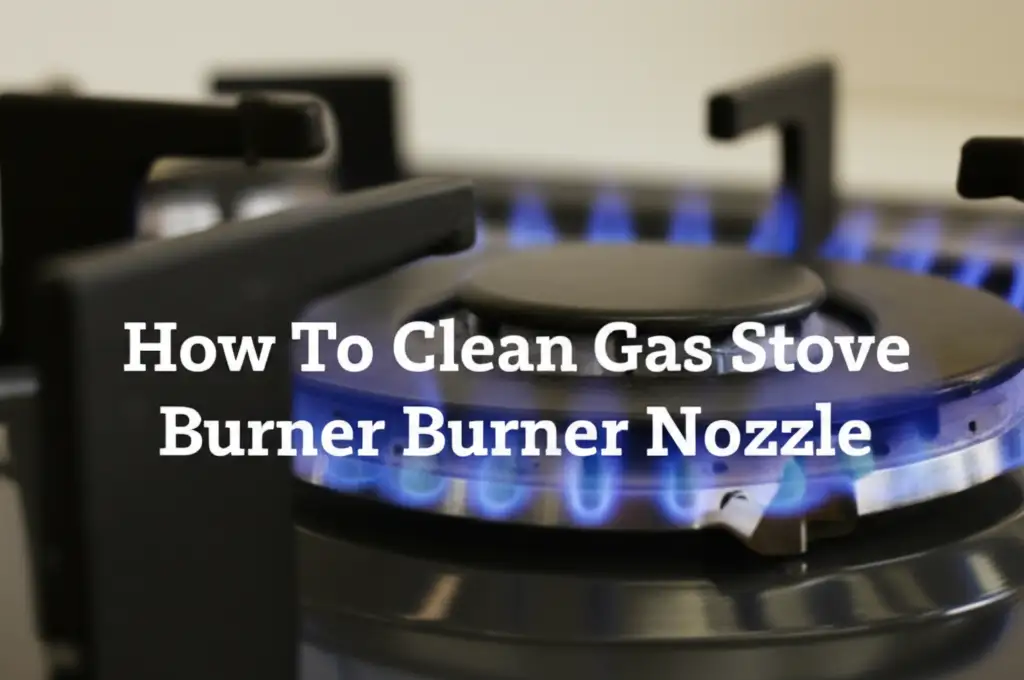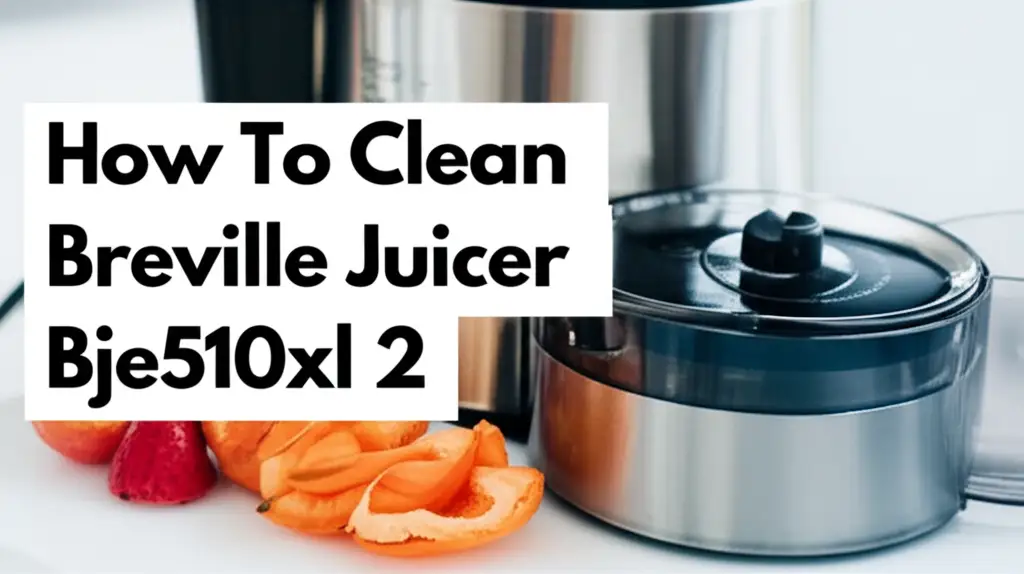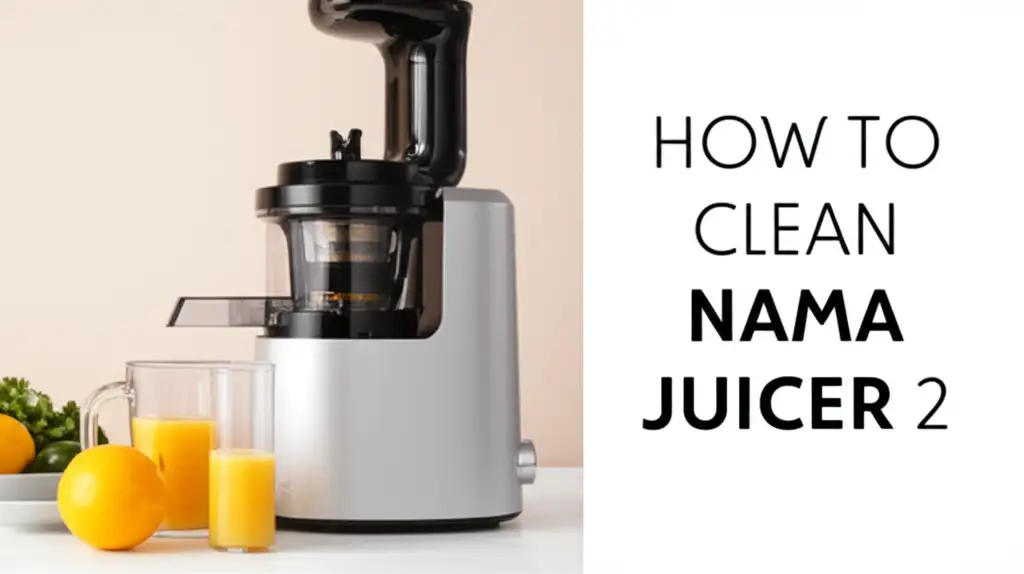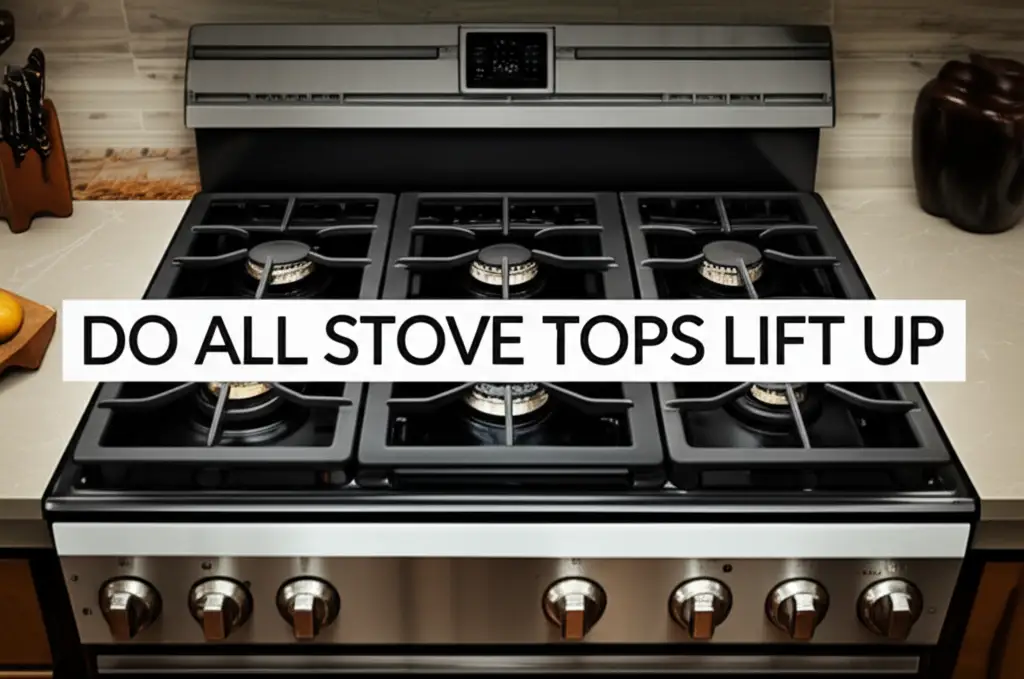· Liora Benning · Kitchen Maintenance · 16 min read
Can You Wash Gas Stove Burners In The Dishwasher
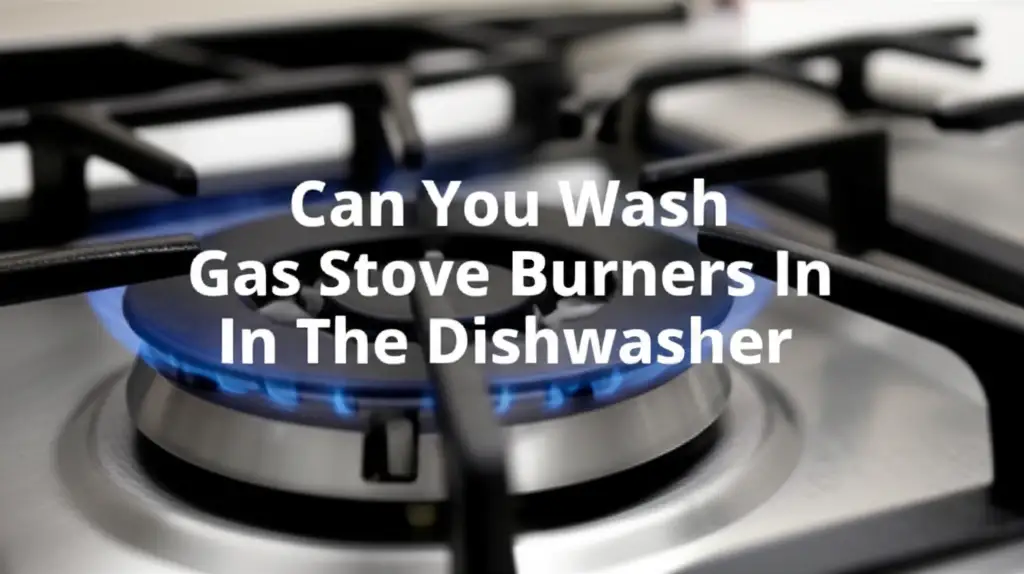
Can You Wash Gas Stove Burners In The Dishwasher: The Complete Guide
We all want a sparkling clean kitchen. Sometimes, cleaning tough grease and grime feels like an endless battle. Your gas stove burners can be the biggest challenge. They collect spills, burnt-on food, and sticky residues. This makes them look unsightly.
Many people wonder if the dishwasher can simplify this chore. It seems like the easiest solution. Just load them up and let the machine do the work. However, the answer is not always a simple yes. This guide helps you understand why. We will explore what parts of your gas stove are dishwasher-safe and which ones are not. We will also provide safe and effective manual cleaning methods. This ensures your burners perform their best.
Takeaway
- Avoid Dishwasher for Most Parts: Dishwashers can damage cast iron grates, aluminum burner heads, and delicate igniter components.
- Check Manufacturer’s Manual: Always consult your stove’s specific manual for dishwasher-safe designations.
- Opt for Manual Cleaning: Soaking in warm, soapy water with baking soda is the safest and most effective method for most burner parts.
- Dry Completely: Ensure all parts are thoroughly dry before reassembling to prevent rust and ensure proper flame.
- Clean Orifices Carefully: Use a thin wire or needle to clear clogs in burner orifices, avoiding water entry.
A Quick Answer
Most gas stove burner parts, including cast iron grates, aluminum burner heads, and burner caps, should not go in the dishwasher. High heat, harsh detergents, and vigorous water jets can cause damage, rust, discoloration, and clogging. Some modern, specialized grates or caps might be dishwasher-safe if explicitly stated by the manufacturer.
Understanding Your Gas Stove Burners: Components and Materials
Before we discuss cleaning methods, it is good to know your gas stove’s parts. Each component has a specific job. Each component is made from certain materials. These materials react differently to water and detergents.
Your gas stove has several key components that get dirty. Knowing what each part is helps you clean it correctly. It also prevents damage. We want your stove to last a long time.
Burner Grates
Burner grates sit on top of your stove. They hold your pots and pans. Most grates are made from cast iron. Cast iron is very durable. It distributes heat well.
Cast iron is prone to rust. A dishwasher’s high heat and harsh detergents can strip away its seasoning. This protective layer prevents rust. Porcelain-coated grates are also common. These can chip or scratch in a dishwasher. Dishwasher cycles are often too aggressive for these materials.
Burner Caps
Burner caps cover the burner heads. They distribute the flame evenly. Caps are usually made of enamel-coated metal or sometimes brass. These materials look nice. They are also functional.
Enamel can chip or discolor in a dishwasher. Brass can tarnish. The water pressure can also dislodge them. This might cause them to bang around inside the dishwasher. It is safer to clean these by hand.
Burner Heads and Bases
Burner heads are the core of your burner assembly. They are often made of aluminum or brass. These parts have small holes called orifices. Gas flows through these holes. Igniters are usually near the burner heads. They spark to light the gas.
Aluminum can oxidize and turn dark in a dishwasher. This happens because of the detergent’s chemicals. Water entering the delicate orifices or igniters can cause problems. It can lead to poor flame performance. It can even prevent the burner from lighting. Protecting these intricate parts is important.
The Dishwasher Dilemma: Why It’s Often Not Recommended
Placing gas stove parts in the dishwasher seems like an easy fix. However, it often leads to more problems. The dishwasher environment is harsh. It is not suitable for many materials found in stove components. This section explains why it is generally a bad idea.
I have seen many people try this shortcut. It usually ends with damaged parts. This requires replacement. Taking a few extra minutes to hand-wash parts can save you money and hassle.
Material Degradation
Different materials react differently to dishwasher cycles. Cast iron grates are very strong. They are also very porous. The hot water and strong detergents in a dishwasher will remove the protective seasoning. This seasoning is just a layer of baked-on oil. Without it, cast iron rusts quickly. Rust makes your grates look bad. It also weakens them.
Aluminum burner heads can also suffer. They often darken or get a cloudy film. This is called oxidation. It is a chemical reaction. This makes them look dirty even after cleaning. Enamel-coated parts might chip or scratch. The vigorous spray and high temperatures cause this. Once chipped, rust can form underneath the enamel.
Clogging Issues
Gas stove burners have tiny holes. These are called orifices or ports. Gas flows through these holes. A precise amount of gas must flow. Dishwashers can push food particles and detergent residue into these tiny openings. This causes clogs.
Clogged ports lead to uneven flames. The burner might not light properly. It might produce a weak flame. It can also produce a yellow flame. A yellow flame means incomplete combustion. This can be unsafe. It produces carbon monoxide. Manual cleaning lets you target these tiny holes. You can ensure they remain clear.
Risk of Damage to Dishwasher
Placing heavy or irregularly shaped items in your dishwasher can be risky. Heavy cast iron grates can shift during a wash cycle. They can hit the spray arms. They can hit the interior racks. This can cause damage to the dishwasher itself. Damaged spray arms cannot clean dishes properly.
Rust from cast iron grates can also transfer to other dishes. It can stain the dishwasher interior. Dislodged small parts, like burner caps, can fall to the bottom. They can block the drain pump. This leads to costly repairs. It is best to avoid these risks entirely.
Dishwasher-Safe Parts: What You CAN Put In
While most gas stove burner parts are not dishwasher-friendly, exceptions exist. Some newer stove models design certain parts for dishwasher cleaning. Always check your stove’s user manual first. This is the most important step. It provides specific instructions for your appliance.
I always tell people to check their manual. Manufacturers know their products best. Ignoring the manual can void your warranty. It can also damage your stove.
Certain Grates
Some modern gas stoves come with specialized grates. These grates might be made of stainless steel. They might have a special coating designed for dishwasher use. These are usually explicitly labeled as “dishwasher-safe” in the owner’s manual.
Do not assume your grates are safe just because they look metallic. Cast iron grates, even if enameled, typically require hand washing. If your manual confirms dishwasher safety, place grates carefully. Ensure they do not block spray arms or fall through racks. If you have Samsung gas stove grates, you might find specific information on if they are dishwasher safe by checking resources like Can Samsung Gas Stove Grates Go in Dishwasher.
Burner Caps (If Manufacturer Approved)
A few stove models may have burner caps made from materials tolerant to dishwashers. These are rare. They will be clearly stated in the appliance’s manual. Most burner caps are made of enameled metal or brass. These materials do not do well in a dishwasher.
If your manual says your burner caps are dishwasher-safe, place them securely. Put them in the utensil basket or on a top rack. This prevents them from moving around. Even with approval, monitor them for signs of wear or discoloration. Early detection can prevent permanent damage.
Manual Cleaning Methods: The Safe and Effective Approach
Hand cleaning is often the best approach for gas stove burners. It offers control and ensures thoroughness. It protects delicate parts from damage. This method ensures your burners remain functional and look great.
I find manual cleaning to be quite therapeutic. It gives me a sense of accomplishment. It also lets me inspect parts closely. This helps catch potential issues early.
Soaking Method
Soaking is an excellent first step for stubborn grease and burnt-on food. Fill a sink or large basin with warm water. Add a few drops of dish soap. For extra power, add a cup of white vinegar or a few tablespoons of baking soda. Baking soda is a natural abrasive and deodorizer.
Disassemble your burner parts. Remove the grates, caps, and burner heads. Place them into the soaking solution. Let them soak for at least 30 minutes. For very tough grime, let them soak overnight. Soaking softens the grime. This makes scrubbing much easier.
Scrubbing Techniques
After soaking, use a non-abrasive sponge or a soft brush. Scrub each part gently. For cast iron grates, avoid harsh scrubbers that can scratch. A stiff nylon brush or an old toothbrush works well for tight spots. For burner caps, a soft cloth or sponge is usually enough.
For difficult areas, make a paste with baking soda and a little water. Apply it to the grates or caps. Let it sit for 10-15 minutes. Then scrub with your brush. The baking soda paste helps lift sticky residues. Rinse all parts thoroughly with clean water.
Addressing Stubborn Stains
Sometimes, even soaking and scrubbing are not enough. For persistent, caked-on stains, you have a few options. A specialized oven cleaner can work for grates. Always follow the product instructions carefully. Ensure good ventilation. Avoid getting oven cleaner on delicate burner heads or igniters.
Another effective solution is a mixture of vinegar and baking soda. Sprinkle baking soda directly on the stain. Then spray with white vinegar. It will fizz. Let it sit for a few minutes. The reaction helps lift the grime. Scrub away. For general stove cleaning, you might find tips on how to clean a glass stove top if you also have an electric range, but remember gas burner parts are different.
Cleaning Burner Heads and Orifices: Precision is Key
Cleaning the burner heads and orifices requires a bit more care. These parts are vital for proper gas flow and ignition. Water must not get into the gas lines. This can cause significant problems.
I have learned that precision in this step prevents future headaches. A small mistake here can lead to a non-functional burner. Taking your time is essential.
Removing Burner Heads
First, ensure your stove is completely cool. Turn off the gas supply if you are unsure. Most burner heads lift straight off. Some might require a slight twist. Be gentle. Avoid forcing anything. Beneath the burner head, you will see the gas orifice. This small brass fitting is where the gas comes out.
Take note of how each part fits together. This helps with reassembly. Some stoves have different sized burners. Keep the parts for each burner together. This prevents confusion during reassembly. You can also refer to your appliance manual for specific disassembly instructions.
Cleaning the Orifices
The tiny holes in the burner heads and the gas orifice itself can clog. Food spills, grease, or even tiny insects can block them. Use a thin piece of wire, like a paperclip straightened out, or a sewing needle to carefully poke through each hole. Do not use a toothpick. It can break off inside.
For the gas orifice, a very fine needle or a can of compressed air can clear blockages. Never use water to clean the orifice directly. Water can get into the gas line. This can cause corrosion or blockages. If you want to know more about cleaning specific gas components, you can refer to information on How to Clean Gas Stove Burner Nozzle. Similarly, cleaning parts of a grill shares some principles with stove cleaning; you might find related insights in How to Clean Gas Grill Venturi Tubes.
Drying Thoroughly
This step is critical. All parts must be completely dry before reassembly. Any moisture can cause rust. It can also interfere with gas flow or ignition. After washing, towel dry everything. Then, allow the parts to air dry for several hours. Placing them in a warm, dry spot or even using a hairdryer on a low setting can speed this up.
Ensure the burner heads are completely dry. Pay close attention to the small holes. You can even shake them gently to remove trapped water. If water remains, you might experience sputtering flames or difficulty lighting the burner. Never reassemble wet parts.
Maintaining Your Gas Stove Burners for Longevity
Regular maintenance extends the life of your gas stove. It keeps your burners performing efficiently. A little effort often prevents big problems. This means less frustration in the long run.
I believe prevention is better than cure. A quick wipe-down regularly saves you from deep cleaning later. It also keeps your kitchen looking good.
Regular Wiping
The easiest way to maintain your burners is regular wiping. After each use, or at least daily, wipe down the burner area. Use a damp cloth with a little dish soap. This removes fresh spills and splatters before they dry. Dried-on food is much harder to clean.
This simple habit prevents grease and food buildup. It also keeps your stovetop looking clean. It avoids the need for heavy scrubbing. This protects the finish of your stove.
Immediate Spill Cleanup
Accidents happen. Spills can occur while cooking. When they do, clean them immediately. If safe to do so, wipe up spills while the stove is still warm. This makes removal easier. Turn off the burner first. Let it cool slightly.
Do not let sugary spills dry on the burner. These can caramelize and become extremely difficult to remove. They can also clog burner ports. Prompt action prevents stains and clogs. This keeps your burners working correctly.
Proper Reassembly
After cleaning, reassembling your burner parts correctly is crucial. Each burner head and cap fits in a specific way. Ensure they are seated properly. The burner cap must align with the burner head. The burner head must sit flat over the gas orifice.
If parts are not assembled correctly, your flame will be uneven. It might even be unsafe. The burner might not light. Double-check that everything is snug. Then, turn on the gas. Test each burner. Look for a strong, even blue flame. A yellow or weak flame indicates an issue.
When to Seek Professional Help or Replace Parts
Despite your best cleaning efforts, sometimes problems persist. It is important to know when to seek professional help. Recognizing when parts need replacement can save you time and ensure safety. Do not hesitate to call a professional if you feel unsure.
I have learned that some problems are beyond DIY fixes. Knowing your limits is part of responsible home maintenance. Safety always comes first.
Persistent Clogging Issues
You might clean your burner orifices thoroughly. However, the burner still produces an uneven or weak flame. This could indicate a deeper clog in the gas line or valve. It might also mean damaged components. These issues are difficult for a homeowner to fix.
A qualified appliance technician can diagnose these problems. They have specialized tools. They can safely access internal components. Do not try to clear deep clogs yourself. This can cause gas leaks or further damage.
Damaged Components
Inspect your burner grates, caps, and heads regularly. Look for cracks, chips, or severe corrosion. Cast iron grates can rust excessively if not cared for. Enamel caps can chip severely. Burner heads can warp or get damaged.
Damaged parts can affect burner performance. They can also pose a safety risk. For instance, a warped burner head can cause an uneven flame. This is inefficient. It can also be dangerous. Replace parts that show significant damage. You can usually order replacements from the stove manufacturer.
Uneven Flames or Ignition Problems
A healthy gas flame is mostly blue. It has a small yellow tip. It is even around the burner. If your flame is consistently yellow, erratic, or very weak, there is a problem. If your igniter sparks but the burner does not light reliably, this also indicates an issue.
These problems could stem from clogged orifices. They could also come from faulty igniters. They could be due to gas supply issues. Cleaning might fix simple clogs. Persistent issues require a technician. They can diagnose problems with the gas valve or igniter system. These are complex components. They require expert attention for safety reasons.
FAQ Section
Q1: Can I put all gas stove parts in the dishwasher? No, you cannot put all gas stove parts in the dishwasher. Most cast iron grates, aluminum burner heads, and delicate burner caps are not dishwasher-safe. High heat, strong detergents, and water pressure can cause rust, discoloration, and damage. Always check your specific appliance’s manual for guidance on which parts, if any, are dishwasher-safe.
Q2: What happens if I wash cast iron grates in the dishwasher? Washing cast iron grates in the dishwasher strips away their protective seasoning, making them prone to rust. The harsh detergents and high temperatures can also cause the cast iron to become brittle. This reduces their lifespan and effectiveness. Hand washing and re-seasoning are necessary to maintain cast iron.
Q3: How often should I clean my gas stove burners? You should wipe down your gas stove burners and grates regularly, ideally after each use, to prevent buildup. A deeper clean, involving soaking and scrubbing individual parts, should be done monthly or whenever you notice significant grime, uneven flames, or ignition issues. Regular maintenance prevents stubborn stains.
Q4: What if water gets into the gas lines? If water gets into the gas lines or orifices, it can lead to blockages and corrosion. This can cause uneven flames, difficulty lighting the burner, or prevent the burner from working at all. Always ensure burner heads and orifices are completely dry before reassembly. If you suspect water in the gas line, do not use the burner and consider calling a technician.
Q5: Can I use harsh chemicals on my burner parts? It is best to avoid harsh chemicals like abrasive cleaners or oven cleaner on delicate burner parts. These can damage finishes, clog orifices, or be difficult to rinse completely. For tough stains, baking soda paste and vinegar are safer alternatives. If using specialized cleaners, always test in an inconspicuous area first and follow product instructions carefully.
Q6: How do I know if my burner is clean enough? A clean burner should produce a strong, even blue flame with a small yellow tip. If your flame is weak, erratic, mostly yellow, or if the burner has trouble igniting, it likely needs more cleaning. Visually inspect the small holes in the burner head; they should be clear and free of debris.
Conclusion
Cleaning your gas stove burners is an important task. It helps maintain appliance efficiency. It also prolongs its life. While the idea of using a dishwasher is tempting, it is generally not recommended for most parts. High heat and harsh detergents can damage materials. They can also clog delicate gas orifices. This leads to poor performance or even safety concerns.
Instead, embrace manual cleaning methods. Soaking parts in warm, soapy water with baking soda or vinegar works wonders. Gentle scrubbing with a non-abrasive brush removes stubborn grime. Precision is key when cleaning burner heads and orifices. Make sure to clear all tiny holes carefully. Always dry all components thoroughly before reassembly. This prevents rust and ensures proper function. By following these guidelines, you ensure your gas stove burners remain in top condition. They will provide a reliable, efficient flame for many meals to come. Your consistent cleaning efforts contribute to a safer, more enjoyable cooking experience.


